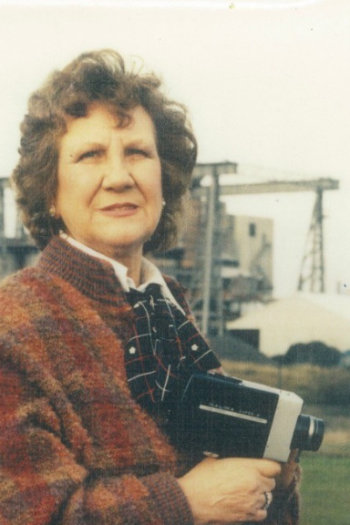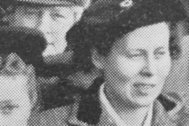
Susan Mary Auld
Susan Mary Auld (10 January 1915 – 9 March 2002) was born Susan Denham Christie into a family of naval engineers.
She was home-schooled until the age of 14 and later followed in her family’s footsteps by becoming the first woman to be awarded a degree in naval architecture from Durham University in 1936.
Her grandfather founded the company that would become Swan Hunter and she joined the design office of what was then Swan Hunter & Wigham Richardson at the Neptune yard, Wallsend, at a time when very few women were employed in shipbuilding.
During the Second World War she was a member of the team that designed the battleship HMS Anson, launched in 1940, and the aircraft carrier HMS Albion. She also worked on the design of vessels used to land Allied troops at Normandy in June 1944.
In 1942 she was referred to as ‘the only woman ship designer in the country’ in the pages of The Woman Engineer, the journal of the Women's Engineering Society.
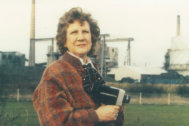
Jennie Shearan
Jennie Shearan (26 November 1922 - 20 February 2005) born Eliza Jane Cain was an environmental campaigner. Monkton Coke Works was constructed in 1936 in Hebburn, in response to the Jarrow March.
Jennie was born and raised in Hebburn. In 1953 she and her family moved into newly built housing on Monkton Lane Estate. The incoming residents were assured that the coke works on their doorstep would close down within a couple of years. Over decades, the facility grew unflaggingly, converting ever-increasing quantities of coal into coke without concern for the residents’ well-being. The residents’ daily reality was a horrendous nightmare of hazardous and acrid sulphur dioxide emissions, all-pervading soot, and clamorous tannoys.
Jennie went from being elected Hebburn Councillor in 1977 to being the only ever female Chairman of Tyne and Wear County Council in 1985. In forming the Hebburn Residents’ Action Group in 1987, she united and empowered the community, and gave them a voice, igniting a national dialogue about the health risks from the pollution that her neighbourhood had to endure.
During her decades-long campaign for environmental justice, Jennie put it all on the line and took on all levels of the establishment, from British Coal to the Government, galvanising her town and bringing her case all the way to the European Parliament. In 1990, the Evening Chronicle wrote, “Jennie and the other campaigners deserve an award for their tenacious decades-long struggle against the fumes. But you don’t generally get prizes for taking on the establishment.”
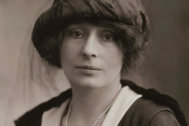
Rachel & Katherine Parsons
Rachel Parsons (1885–1956) was among the most remarkable women of her generation, but her considerable achievements, both as an engineer and a feminist trailblazer, have only recently come to public prominence.
Rachel was the first woman to study engineering at Cambridge University (1910–12) and the first to sit on the board of a major industrial concern, C. A. Parsons & Co., at Heaton, Newcastle upon Tyne. There, during the First World War, she trained female workers in the construction of steam turbines for energy generation. In 1916 she joined the Ministry of Munitions and instructed women around the country in engineering skills.
After the war, Rachel was a leading light in the National Council of Women, and in 1919 she became the founding president of the Women’s Engineering Society, driven by the mantra that ‘Women have won their political independence. Now is the time for them to achieve their economic freedom too.’ Among the first women elected to the London County Council, Rachel later stood for Parliament in the 1923 general election and campaigned ceaselessly for equal pay and employment rights.
Rachel’s mother, Katharine, Lady Parsons (1859–1933), was another keen advocate for female emancipation. The wife of Sir Charles Parsons, inventor of the compound steam turbine, Katharine gave a speech in 1919 on ‘Women in engineering and shipbuilding during the war’ that was hugely influential in changing the perception of female industrial workers. She was a co-founder of the Women’s Engineering Society.
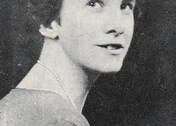
Dorothy Buchanan
Dorothy Donaldson Buchanan, (8 October 1899 – 13 June 1985) was a Scottish civil engineer, and the first female member of the Institution of Civil Engineers, successfully passing the institution's admission examination in 1927.
Dorothy Buchanan was born at Langholm, Dumfriesshire, and was the youngest of five children to Marion Vassie and Reverend James Donaldson Buchanan. She pursued studies in civil engineering at the University of Edinburgh, alongside Charles Glover Barkla, who had been awarded a Nobel Prize in Physics in 1917. Whilst there, she joined the Women Engineering Society at the university.
Buchanan started work for Dorman Long & Co. which saw some of her greatest career moments. She went to work on the Silent Valley Reservoir project in Belfast, Northern Ireland for their new water supply scheme. She was part of their bridge design team for the George V Bridge, now called the Tyne Bridge, in Newcastle and the Lambeth Bridge in London. In addition, she worked on the design team for the Sydney Harbour Bridge, with a wage of £4 per week, which was the “same as the boys”.
Buchanan achieved a professional qualification with the Institution of Civil Engineers. She was the only woman among an institute of 9,979 men to be awarded a membership of ICE, in December 1927. She later remarked, ‘I felt that I represented all the women in the world. It was my hope that I would be followed by many others’. In February 2019, at the ICE headquarters the named a room after her, to celebrate their first female member of the institution.
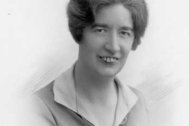
Hope Winch
Hope Winch (1894 – 8 April 1944), born in Brompton, North Yorkshire, was the founder of the pharmaceutical department at Sunderland Technical College, predecessor to the University of Sunderland.
Winch initially trained at the Royal Victoria Infirmary in Newcastle upon Tyne to learn about pharmacy’s practical aspects before passing the Apothecaries' Assistant Examination for the Society of Apothecaries July 1913, where she achieved the highest score among her peers in all exams; Practical Pharmacy, Materia Medica, Prescriptions and Pharmacy, and Chemistry. She later moved to London to study at the School of Pharmacy of the Pharmaceutical Society of Great Britain, qualifying as a Chemist and Druggist on 30 June 1917.
In 1921, Winch then went on to teach at Sunderland Technical College as its first full-time pharmacy lecturer. In 1928, she opened a laboratory for drug preparation. Then in 1928, she was appointed as head of a new and independent, Department of Pharmacy.
Winch’s ultimate ambition was to set up the finest pharmacy department in the North East of England. In 1930, the pharmacy department received the one of the first recognitions by the University of London for teaching its external Bachelor of Pharmacy degree.
She also became well established in the local pharmacy community, serving as Secretary of the Local Branch of the Pharmaceutical Society for over 20 years, and then as Chairperson.
